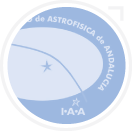Analysing the consistency of Martian methane observations by investigation of global methane transport
Reports of methane on Mars at different times imply varying spatial distributions. This study examines whether different observations are mutually consistent by using a global circulation model to investigate the time evolution of methane in the atmosphere. Starting from an observed plume of methane, consistent with that reported in 2003 from ground-based telescopes, multiple simulations are analysed to investigate what is required for consistency with an inferred methane signal from the Thermal Emission Spectrometer made 60 sols later. The best agreement between the existing observations is found using continued release from a solitary source over Nili Fossae. While the peaks in methane over the Tharsis Montes, Elysium Mons and Nili Fossae regions are well aligned with the retrievals, an extra peak on the south flank of the Isidis basin is apparent in the model due to the prevailing eastward transport of methane. The absence of this feature could indicate the presence of a fast-acting localised sink of methane. These results show that the spatial and temporal variability of methane on Mars implied by observations could be explained by advection from localised time-dependent sources alongside a currently unknown methane sink. Evidence is presented that a fast trapping mechanism for methane is required. Trapping by a zeolite structure in dust particles is a suggested candidate warranting further investigation; this could provide a fast acting sink as required by this reconstruction.































